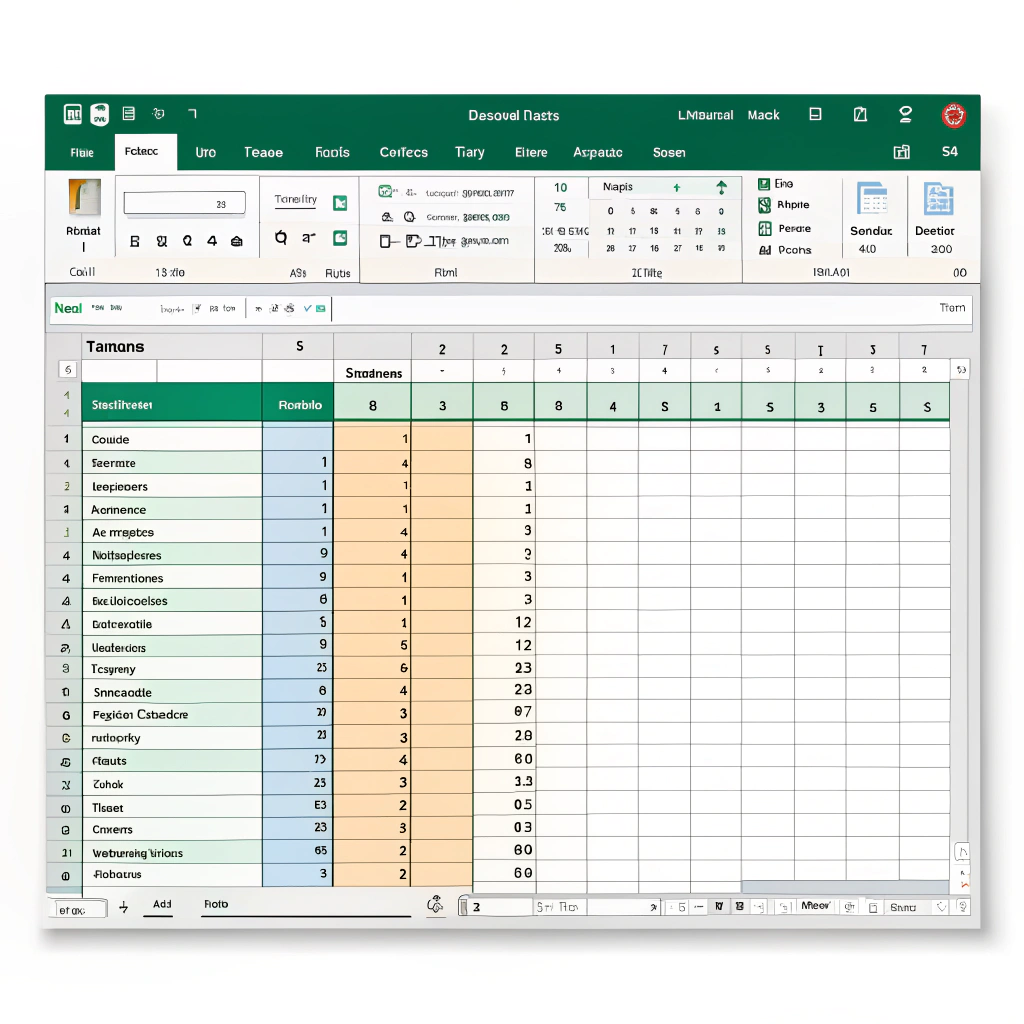For medium-sized service providers, predicting revenue growth is essential for planning and strategy. Excel + AI models can help forecast future revenue based on historical data.
Step 1: Preparing Historical Data in Excel
Organize your historical revenue data in a table format. Include key information:
Date
Revenue ($)
Marketing Spend ($)
New Clients
Sales Growth (%)
Step 2: Implementing Excel Formulas for Basic Revenue Forecasting
Create a simple growth model to predict future revenue based on historical growth rates.
Formula to calculate future revenue (using the average growth rate):
= B2 * (1 + AVERAGE(E2:E4))This will forecast future revenue based on the average growth rate from the previous months.
Step 3: Using AI for Advanced Revenue Prediction with Excel
To create a machine learning model in Excel, use Python (via Excel’s Python integration or external libraries like Pandas). Here’s an example using Linear Regression to predict future revenue based on past data.
Python Code Example for Revenue Forecasting
import pandas as pd
from sklearn.linear_model import LinearRegression
import numpy as np
# Load historical data into pandas DataFrame
data = {
'Date': ['Jan 2024', 'Feb 2024', 'Mar 2024'],
'Revenue ($)': [50000, 55000, 60000],
'Marketing Spend ($)': [5000, 5500, 6000],
'New Clients': [30, 35, 40]
}
df = pd.DataFrame(data)
# Prepare the data for training the model
X = df[['Marketing Spend ($)', 'New Clients']] # Features
y = df['Revenue ($)'] # Target variable
# Train the machine learning model (Linear Regression)
model = LinearRegression()
model.fit(X, y)
# Predict future revenue (for example, for April 2024)
new_data = np.array([[6500, 45]]) # Marketing Spend = 6500, New Clients = 45
predicted_revenue = model.predict(new_data)
print(f"Predicted Revenue for April 2024: ${predicted_revenue[0]:,.2f}")Step 4: Visualizing Revenue Predictions in Excel
Once the Python model generates predictions, you can easily transfer the results into Excel for visualization.
Create a line chart or column chart to display:
- Actual revenue over time
- Predicted revenue for future months
Step 5: Automating Monthly Revenue Predictions in Excel
Once the AI model is set up and predictions are calculated, automate the process with Excel’s VBA scripting or an external Python script:
VBA Example for Automated Revenue Prediction
Sub PredictRevenue()
Dim model As Object
Set model = CreateObject("Scripting.Dictionary")
' Historical data (example)
model.Add "Marketing Spend ($)", Array(5000, 5500, 6000)
model.Add "New Clients", Array(30, 35, 40)
model.Add "Revenue ($)", Array(50000, 55000, 60000)
' Input new values for prediction (e.g., April 2024)
new_data = Array(6500, 45)
' Apply the AI model prediction logic
' This part can integrate with Python or other methods for real forecasting
predicted_revenue = ' Call Python or other predictive logic here
' Write the predicted revenue back to the Excel sheet
ThisWorkbook.Sheets("Forecast").Range("A1").Value = predicted_revenue
End SubThis VBA script will call a machine learning model (e.g., Python) to predict revenue based on new input values and then update the Excel sheet with the predicted results.
Step 6: Analyzing Growth Opportunities with AI Insights
Once predictions are in place, analyze key factors driving revenue growth:
- Marketing Spend Impact: How much marketing spend correlates with revenue increase
- Client Growth: The relationship between the number of new clients and revenue
- Sales Channels: Identify which sales channels provide the best ROI
Using Pivot Tables in Excel, analyze these factors:
Marketing Spend ($)
Revenue ($)
New Clients
Growth Opportunity
Use this data to pinpoint areas for further investment or improvement.
Step 7: Reporting Revenue Growth Predictions in Excel
Generate automated reports summarizing the predicted revenue for future months, and share insights with stakeholders:
- Summary Report (automatically generated via Python or Excel VBA)
- Custom Revenue Prediction Dashboards for stakeholders
Key Benefits of AI-Powered Revenue Prediction for Service Providers
✅ Forecasts future revenue based on historical data
✅ Automates financial planning, saving time on manual calculations
✅ Identifies growth opportunities by analyzing trends and key metrics
✅ Increases accuracy in revenue predictions
By using AI models in Excel, service businesses can leverage data to improve their revenue forecasting and strategically plan for the future.

Lillqvist Strat consults on business developement, software projects, automation, SOPs, analytical tools and more.
Contact me today to get started on our journey to higher profits, more revenue and happier employees!
Go to Contact now



